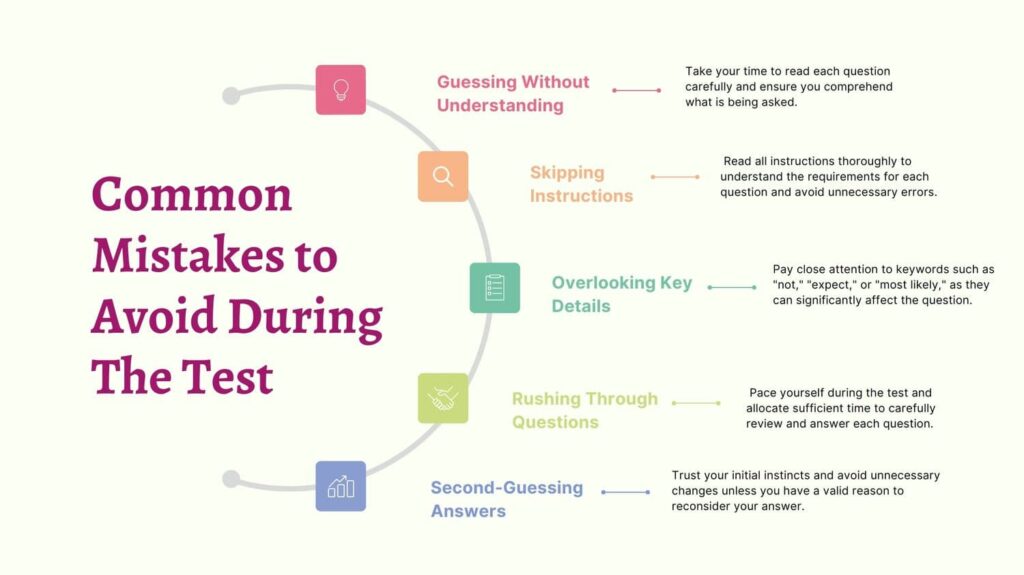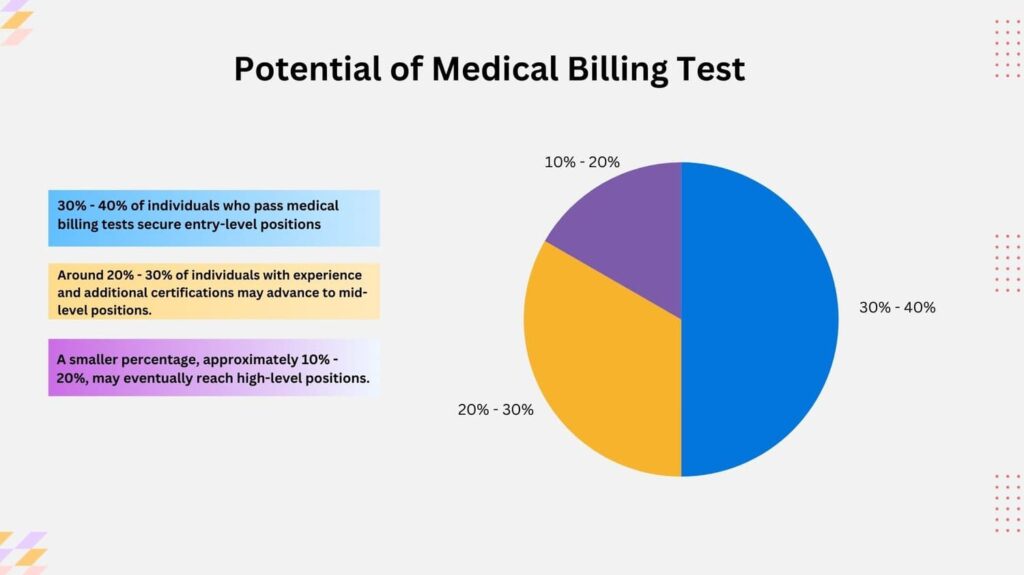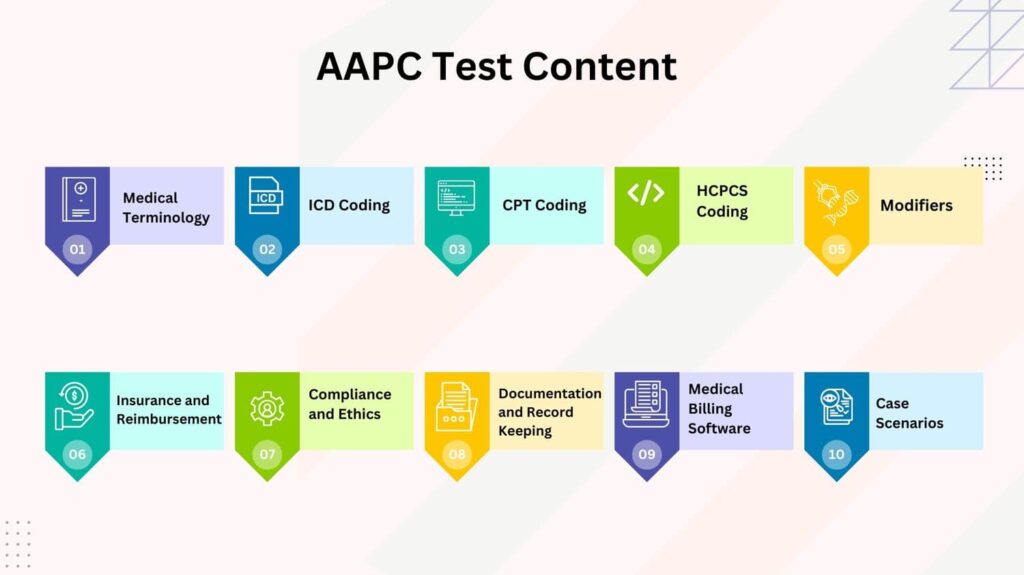Starting a career requires clearing some stages first. You have to acquire skills, education, and do some practice. But when you are all set to show your skills practically, you have to go through a test. Because spending time taking multiple medical billing practice tests is crucial for your career and education, most importantly when getting a certificate from AAPC.
This exam helps authorities judge your knowledge and skills about the specific billing area you are applying for. So before moving forward, let us tell you the questions that are more likely to appear in the test.
We can’t provide all accurate questions that examiner ask. But based on the previous medical billing practice tests, here are some short questions along with answers that will surely make up the most of the paper.
Format Of Medical Billing Exam
If you are confident enough to test yourself after studying medical billing sincerely, then a test would be great to find out if you studied well or do you need more time.
However, when getting AAPC certification, the test format may vary depending on their preferences. But here are some basic tips we can provide that will make your preparation easier.
First of all, tests are based on mcq’s. You will be given 4-5 choices, from which you have to choose one. It may include one-word answers as well as long statements.
There might also be some true/false questions. Here a statement will be given and you have to define whether it is true or not.
Matching exercises are also very common in this test. There will be 2 columns where you have to match statements with the right match or code. Since billing involves coding as well, there will be code-related questions too. So be prepared.
When it comes to the context of the test, you will mostly be asked about medical or anatomical terminology. Codes are a crucial part of the billing industry as discussed, so make sure to learn about all coding guidelines, as these questions will also be included in the test.
Furthermore, claims make up a big portion of revenue generation in medical billing. The exam may ask you about the process of claim application preparation, submission, and denial management.
In short, medical billing practice tests include every big aspect of medical billing to judge your knowledge diversity in this healthcare domain.
Medical Billing Practice Test Questions

Now that you know the format of the exam, here are the compilations of some medical billing practice test questions along with answers. Spend time reading all these and take notes to remember them all.
Question: What is the main reason behind medical coding in the medical field?
Answer: The goal is to convert medical procedures and services into globally recognizable alphanumeric codes.
Question: In medical coding, what does CPT stand for?
Answer: Current Procedural Terminology.
Question: In ICD-10 coding, what is the average number of characters in a complete code?
Answer: Seven.
Question: What federal agency is in charge of the Medicare program in the United States?
Answer: Centers for Medicare and Medicaid Services (CMS).
Question: In medical billing, what is the National Provider Identifier’s (NPI) function?
Answer: To uniquely identify healthcare providers.
Question: In the context of medical billing, what does the term “EOB” mean?
Answer: Explanation of Benefits.
Question: Which organization is responsible for publishing the official CPT coding guidelines?
Answer: American Medical Association (AMA).
Question: What does a “clean claim” mean in medical billing?
Answer: A statement that needs no further information and is full and accurate.
Want to Know the Potential of Your Career?
Question: What does the acronym HIPAA stand for?
Answer: Health Insurance Portability and Accountability Act.
Question: What kind of code is used to explain why a patient is seeking medical attention?
Answer: Diagnosis code.
Question: What function does a modifier serve in medical billing?
Answer: To give more details about a service or operation that was carried out.
Question: What role does the ICD-10-CM manual play in the process of medical coding?
Answer: In medical settings, it is employed to code illnesses, ailments, and symptoms.
Question: What distinguishes CPT codes from ICD codes?
Answer: In contrast to CPT codes, which describe procedures and services, ICD codes are more focused on diagnoses.
Question: What does “co-insurance” mean in the context of medical billing?
Answer: The portion of medical expenses that a patient must pay after their deductible is satisfied.
Question: What does the CMS-1500 form in the US serve to accomplish?
Answer: It is the typical claim form for professional claims and is used for billing outpatient services.

Question: What part does a medical billing specialist play in a healthcare organization’s revenue cycle?
Answer: To guarantee timely and accurate claim submission and to optimize reimbursement.
Question: Which company creates and maintains the Procedure Coding System, or ICD-10-PCS?
Answer: Centers for Medicare and Medicaid Services (CMS).
Question: What role does the DRG system play in the payment of healthcare services?
Answer: In order to make payments, it groups inpatient stays according to comparable clinical and resource-utilization traits.
Question: What is the National Correct Coding Initiative’s (NCCI) goal when it comes to medical coding?
Answer: To encourage proper coding practices and prevent incorrect coding.
Question: What is a “pre-authorization” in the context of medical billing?
Answer: The insurance company’s approval must be obtained prior to the provision of healthcare services in order to guarantee coverage and reimbursement.
Question: What is the goal of the medical coding CCI (Correct Coding Initiative) edits?
Answer: The goal is to recognize and avoid incorrect code combinations that ought not to be reported together.
Question: What does a “superbill” mean in the context of medical billing?
Answer: The answer is a record that medical professionals use to keep track of the services they give a patient and use as the foundation for billing.
Question: What role does the Coordination of Benefits (COB) play in medical billing?
Answer: In other words, it establishes the sequence in which claims for identical medical services are paid by various insurance plans.
Question: What is an “allowed amount” in the context of medical billing?
Answer: The highest amount that an insurance plan will pay for a medical service that is covered.
Question: What is the main function of the UB-04 form in billing for healthcare services?
Answer: In order to bill institutional healthcare services, this is the typical claim form that is used.
Is Medical Billing And Coding Hard?
Question: What part of medical billing does the National Uniform Billing Committee (NUBC) play?
Answer: It creates and manages the institutional billing UB-04 form.
Question: What does the word “deductible” mean in the context of health insurance?
Answer: The sum that a patient must pay out-of-pocket for approved medical services prior to the start of insurance coverage.
Question: Regarding medical billing, what does a Remittance Advice (RA) mean?
Answer: The answer is a letter that a payer sends to a provider outlining how a medical claim is reimbursed.
Question: What role does the National Drug Code (NDC) play in medical billing?
Answer: In response, it helps ensure correct pharmaceutical billing by identifying particular medications.
Question: What does a Level I HCPCS code mean in medical coding terminology?
Answer: Often referred to as CPT codes, these codes denote treatments and services rendered by medical professionals.
Question: What does the term “pre-existing condition” mean in the context of health insurance?
Answer: A pre-existing medical condition that was addressed before the initiation of a new insurance policy.
Question: What does “balance billing” mean in the context of medical billing?
Answer: The process of charging a patient the difference between what the healthcare provider charges and what their insurance allows.
Question: What function does a revenue code serve in the UB-04 form?
Answer: The answer is to pinpoint the precise division or service inside a medical center that rendered the services.
Question: What is the Office of Inspector General’s (OIG) main responsibility in the healthcare industry?
Answer: To stop fraud, waste, and abuse in government-funded health care programs.
Question: What does “provider credentialing” mean in the context of medical billing?
Answer: The act of confirming a healthcare provider’s credentials and suitability for involvement in insurance networks.
Question: What exactly does the term “claim denial” mean in the context of medical billing?
Answer: An insurance company’s decision to deny a claim and withhold payment.
Question: What function does the CMS-1450 form serve?
Answer: Inpatient hospital stays are among the institutional services for which the UB-04 form is utilized for billing.
Question: What function does a clearinghouse for medical billing serve?
Answer: To handle and send electronic claims to different insurance payers on behalf of healthcare providers.
Do You Want AAPC Certificates?
Question: What does the term “assignment of benefits” mean in the context of health insurance?
Answer: The consent that a medical professional has to take direct payment from the insurance company on the patient’s behalf.
Question: What function does the ICD-10-PCS (Procedure Coding System) serve in the field of medical coding?
Answer: Inpatient hospital procedures in the US are coded using it.
Question: What function does the Recovery Audit Contractor, or RAC, serve in the healthcare sector?
Answer: To find and fix any erroneous payments that Medicare has made.
Question: What does the word “capitation” mean in the context of medical payment?
Answer: A payment plan in which medical professionals get a set sum for each patient, independent of the services rendered.
Question: What function do the E&M codes serve in medical billing?
Answer: The purpose of this response is to outline and document the management and evaluation services that medical professionals offer.
Question: What does the term “bundled payments” mean in terms of healthcare reimbursement?
Answer: In place of making separate payments for each related service or procedure, a single payment is made for the group.
Question: In medical billing, what does the phrase “clean claim rate” mean?
Answer: The proportion of claims that are filed without any mistakes or inadequacies.
Question: What is the purpose of the CDT code set in medical coding?
Answer: To code dental procedures and services.
Question: What does “medical necessity” mean in the context of billing for healthcare services?
Answer: The necessity and reasonableness of healthcare services for the diagnosis or treatment of a medical condition is the requirement.

Question: What role does the ICD-10-CM manual play in the process of medical coding?
Answer: Code diagnoses and conditions for outpatient and doctor office services.
Question: What is a “COBRA” plan in terms of health insurance?
Answer: The option for people to retain health coverage temporarily after losing their job-based insurance.
Question: What does a healthcare organization’s CDM (Charge Description Master) serve as?
Answer: The goal is to keep an exhaustive record of all the fees associated with all the treatments and services rendered.
Question: Define the term “medical billing modifier” and provide an example.
Answer: The addition of a two-digit code to a CPT or HCPCS Level II code to denote a particular situation is the answer. For instance, a significant, independently identifiable evaluation and management service is indicated by modifier -25.
Question: What role does a payer play in the process of billing for healthcare?
Answer: To pay medical professionals for services that policyholders receive that are covered.
Question: What does the word “encounter form” mean in medical billing?
Answer: A superbill, is a record of services and diagnoses made by medical professionals during a patient visit.
Question: What is the goal of the healthcare industry’s Charge Capture Review (CCR) process?
Answer: The goal is to make sure that all billable services and procedures are accurately and completely recorded.
Question: What does “Fee-for-Service” mean in terms of healthcare reimbursement?
Answer: The answer is a payment scheme in which medical professionals get paid for each treatment or operation they perform.
Question: What function does the National Council for Prescription Drug Programs (NCPDP) serve in the medical field?
Answer: In response, it creates specifications for electronic pharmacy transactions and claims.
Question: What does the word “medigap” mean in the context of health insurance?
Answer: The solution is an additional insurance plan that helps pay for expenses that Medicare does not cover.
Question: What is the purpose of a “Compliance Plan” in relation to healthcare compliance?
Answer: The purpose of establishing policies and procedures is to guarantee compliance with ethical standards, legal requirements, and healthcare laws.
Benchmark Your Skills

If you need a medical billing practice test, these are the questions that make up the entire billing industry.
We couldn’t provide all queries related to billing and coding but we have touched every domain in the medical billing and mentioned accurate answers. So take the test, see if you have prepared enough, and step in your career now.

